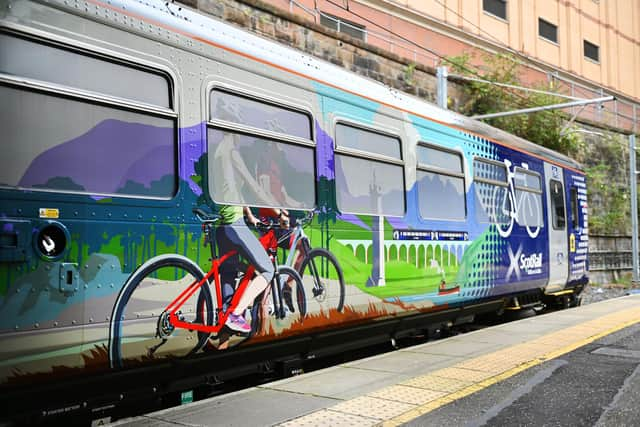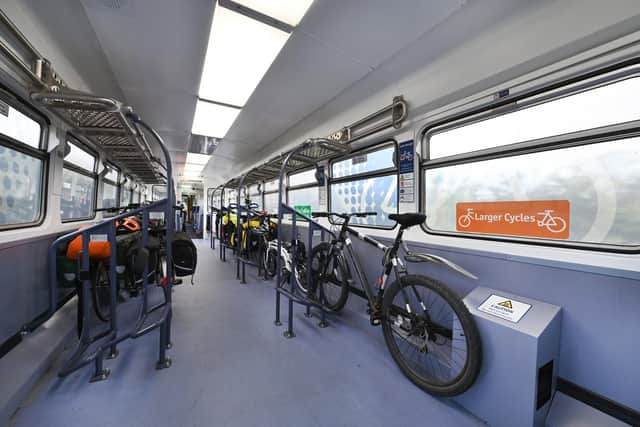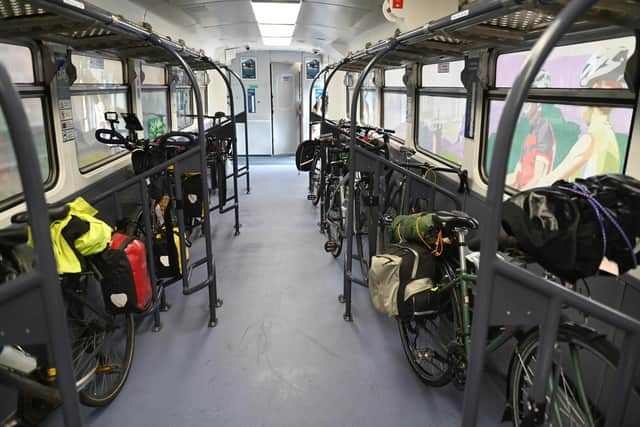ScotRail’s new cycle carriages should be first step towards upgrading trains to match the scenery – Alastair Dalton
On short journeys, going by bike removes any worries about traffic congestion or finding a parking space.
To maintain that freedom on longer trips, the train can provide the ideal counterpart in getting you to where you want to cycle.
Advertisement
Hide AdAdvertisement
Hide AdPart of the attraction is that bikes are carried free on many trains, including ScotRail’s.
However, there’s limited space for them on board and these can get booked up fast on busy tourist lines.
ScotRail and its Transport Scotland masters saw an opportunity there and, three years after our sister title Scotland and Sunday revealed the plans, Britain’s first dedicated cycle carriages have finally started operating on the Glasgow-Oban route.
The initial three “Highland Explorer” coaches have more than quadrupled the bike-carrying capacity of the line’s trains from six to 26.
The carriages are due to be extended to the West Highland Line’s other arm, to Fort William and Mallaig, and then to routes such as Inverness to Kyle of Lochalsh and Wick/Thurso.


Two thirds of the space in the new coaches – converted from single-carriage trains – is allocated to accommodate 20 cycles in five bays for two bikes each lengthways down each side, with 24 seats in the remaining third.
You can’t miss the carriages, whose eye-catching exterior by Scottish artist Peter McDermott features a large bike symbol, landmarks on the routes they will serve and a Highland cow.
Taking a test trip on Monday to try one out, boarding and stowing my bike was easy thanks to the wide gangway between the cycle bays, and it was just under half full when we left Glasgow Queen Street.


Advertisement
Hide AdAdvertisement
Hide AdCyclists can choose to either sit in the train’s other two carriages, or, for an extra £10, opt for seating in the cycle coach, which has route maps embedded in the table tops.
I think that’s a reasonable price to pay considering you get a food bag containing sandwich, crisps, shortbread and water plus a cup of tea or coffee in return.
However, there appeared to be no signs on board to explain that, and as soon as the conductor pointed out the supplement, many of my fellow cyclists moved to another carriage.
Equally, other passengers boarding the train en route looked bemused as they entered the carriage and weren’t sure if they could sit there.


The differences in seat and carpet design and colour scheme to the rest of the train are too subtle to indicate what’s effectively a different class of travel.
The refurbishment, carried out by Brodie Engineering in Kilmarnock, is part of an innovative new use for the carriages, which are approaching 35 years old.
But they seem to come somewhat short of the “scenic trains” promised as part of the current ScotRail franchise which were envisaged as being “emblematic of the best of Scotland”.
As recently as the 1980s, observation cars were attached to trains on the West Highland Line, while there have been calls for Swiss-style glass-roofed carriages to provide panoramic views of what’s been hailed as one of the world’s greatest railway journeys.
Advertisement
Hide AdAdvertisement
Hide AdThe route’s current diesel trains are due to be replaced by battery or hydrogen power by 2035. An opportunity at last?
A message from the Editor:


Thank you for reading this article. We're more reliant on your support than ever as the shift in consumer habits brought about by coronavirus impacts our advertisers.
If you haven't already, please consider supporting our trusted, fact-checked journalism by taking out a digital subscription.
Comments
Want to join the conversation? Please or to comment on this article.
